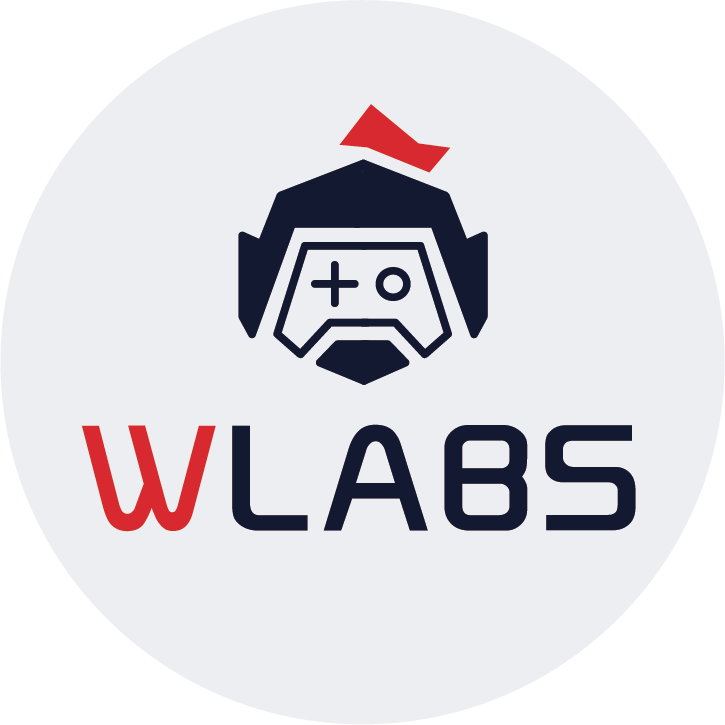Main points of this article:
Main points of this article:
1. What type of game is most suitable for changing to a blockchain game?
Except for the unique pledge mining type and pure NFT type of chain games, the rest of the types are highly overlapped with traditional game types. Therefore, there is no absolute conclusion about which types can be chained and which types cannot be chained.
From the perspective of developers, games that meet the following characteristics are more suitable for blockchain games:
easy to gather popularity;
High earning limit;
fast payback;
Anti-Script and Cheat
2. The type of chain reform from the perspective of developers, see the following figure:

3. Different teams can show their talents: those who are good at narrative are driven by innovation, those who are good at Fi are driven by models, those who are good at IP culture are driven by consensus, and those who are absolutely confident are driven by gameplay.
Part 1: Preface - What types of games are suitable for blockchain games
As early as 2017, the worlds first blockchain game CryptoKitties was launched, which opened the NFT+ chain game track. Since then, most of the chain game products on the market are similar to traditional card collection games, with NFT (digital collection) as the core , mainly by spending time to collect resources, and the game experience is single.
Beginning in 2019, the form of P2E (Play to Earn) emerged, and a single-currency or dual-currency economic system opened up a new experience of chain games. The masterpiece Axie Infinity exploded in 2021 with the popularity of Gamefi , surpassing Honor of Kings in a single day and becoming the worlds most lucrative mobile game.
At the beginning of 2022, StepN became the hottest application in the encryption market in the first quarter. It reached 300,000 daily activities in just 4 months. The current (May 2022) market value has exceeded 20 billion US dollars, and it has successfully attracted a large number of users. The participation of non-encrypted users has explored a feasible direction for lightweight chain games that combine with reality.
At the beginning of May, Yuga Labs entered the Metaverse and the game layout work Otherside to open land for sale, triggering a rush to buy, which once caused another Gas War on the Ethereum chain after CryptoKitties in 2017, and the Gas for casting a piece of land reached 2-3ETH .
Whats the future? At present, we are vaguely seeing a trend: chain games will move closer to traditional games in terms of quality, gameplay, and experience, and more traditional game companies/teams will enter the game; but at the same time, a new economic system and decentralization will be added Asset attributes, and under the development trend of overseas Metaverse, chain games will be combined with social, VR/AR, IP, UGC co-creation, etc. In the end, chain games will completely change the relationship between players and games. As senior game design practitioners, we believe that the revolution of games is just beginning.
This is just the beginning.
Before starting this series of long articles, I would like to raise a question that everyone is very concerned about, and it is also the question that many WEB2 game practitioners want to ask when they first explore WEB3: what type of game is most suitable for changing to blockchain games?
The picture below shows the types of chain games that we have classified and summarized according to different gameplays. You can see that, except for the unique pledge mining type and pure NFT type of chain games, the rest of the types are highly overlapped with traditional game types. Therefore, there is no absolute conclusion about which types can be chained and which types cannot be chained. However, it should be noted that different types have their own emphasis on concepts, designs, codes, operations, etc. in chain reforms. Rote.
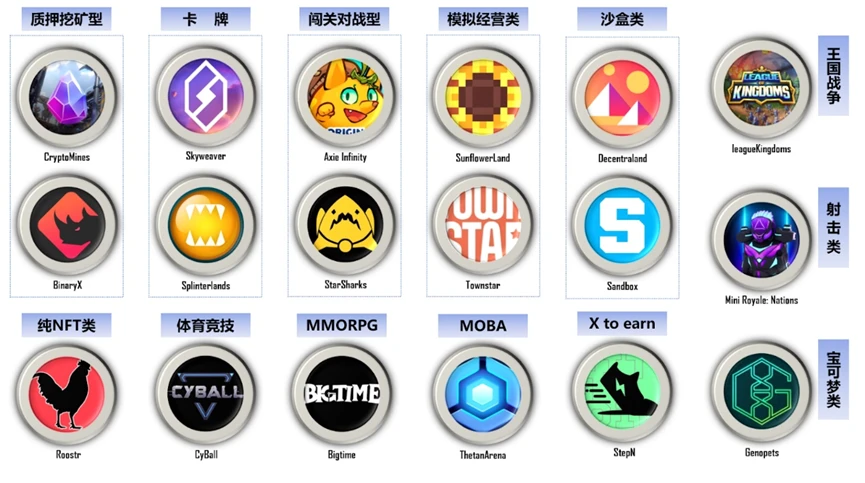
In addition to the classification of chain games based on gameplay, we can also classify them according to the purpose of the participants entering the game:
From the perspective of chain game players, it is best to use games that can be operated for a long time, have a large number of people, and be fun to change to the chain. After changing to chain games, you can enjoy the fun of the game and make money at the same time.
From the perspective of developers, we are games with fast payback, high earning limit, and a large number of people-more people means that the money comes quickly, more and lasts longer (lets not talk about ideals here).
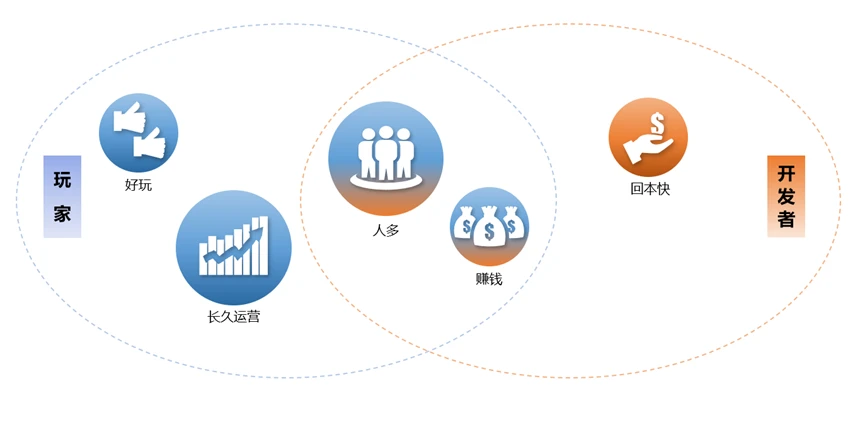
From the perspective of developers, we can initially summarize some points of view:
A <many people>
The most important thing is a large number of people and a high popularity. This is the common appeal of players and project parties (the intersection of players and developers in the graph of chain game appeals)!
The initial popularity and whether the popularity can last will play a decisive role in the success or failure of the game. More people mean more money, and players will also have filters to think the game is fun (a survey of traditional game players by a large company shows that most players choose important considerations for games), so chain reform should try to choose games that have the potential to become a large crowd.
can tell a good story
For example, Sandbox, in the publicity, highlights that it is the first open scene in the metaverse, and the future ready player.
low threshold
The main gameplay is the traditional game against the target, which is easy to understand and play.
High ease of use, reducing learning costs for players outside the blockchain game circle.
Example: StepN has added a built-in wallet, which lowers the threshold for players to learn and use the wallet for exchange.
Familiar with the theme / gameplay type, the player has path dependence
Game themes that are popular and familiar to target players in Southeast Asia, such as Immortal Cultivation/Three Kingdoms/Pets/Eating Chicken/Growing Vegetables and Mining...
There are big IPs familiar to the target player group, such as Heroes of Mavia, which imitates COC Clash of Clans.
The economic model is well designed
The produced consumable tokens have persistent in-game demand.
There are a large number of trading needs between players in the design, and the trading method is smooth and convenient.
Growth and Delivery Model Health
Late-entry new players have no obvious efficiency disadvantages in resource acquisition, and can quickly catch up in growth.
Growth and pursuit of goals take time to achieve, and new vertical and horizontal pursuits can be easily expanded.
There is a setting that can play together after pulling people
After inviting newcomers, it can be mutually beneficial and win-win.
With <no combat power>/The team-based gameplay of <No Hierarchy Discrimination>, such as team exploration, guild PKs demand design for the number of people, etc.
For example: If there are some gameplays where playing with a large player and a small player will not reduce the income, and for example, in the Dragon Nest mobile game guild confrontation, there is a setting that the number of likes of participating spectators is linked to the number of encouragement buff layers
B <make money>
Making money is the common goal of developers and players, but the problem is that all participants want to make money, so where does the money come from? Lets make a foreshadowing of this question first, and we will give our discussion later.
From a developer’s point of view, chain reforms must of course choose games that make money and can make a lot of money (the upper limit of making money is high). Those who meet the following game characteristics will have an advantage in game revenue:
with strong numerical confrontation
Conflict and confrontation can stimulate the players consumption impulse.
From traditional game experience: Fair competitive games tend to charge for appearance and require a large number of players. The ability to make money of the same size is weaker than that of strong value games. The best case is Glory of the King.
Strong domestic demand and free trade
The greater the transaction volume between players, the players can make money, and the official tax revenue is also considerable.
The stronger the domestic demand, the greater the consumption of tokens, the more conducive to the long-term stability of the currency price.
Let players feel that they can make money together with the project party
Officials mainly make money through tax collection (commission in the transaction link) and currency value appreciation.
Players make money through transactions, and the ability to make money is linked to reinvestment.
Note: At present, the money-making model of most chain games is still that old players harvest leeks from new players. The possible breakthrough direction in the future is: first refer to the traditional free-to-play games, which will eventually be paid by the top krypton gold players, and then seek cooperation income from external business partners.
high earning cap
Numerical design has depth.
There are settings that are conducive to the continuous entry of new players.
The player base can grow bigger and bigger.
Compensation setting with cost loss aversion
For example, there is a platform design: the value of a game’s highly liquid token is transferred to a weakly liquid NFT. Even if the game’s currency price collapses, its NFT can still obtain the expected associated income in the new game on the platform.
Draw the players attention to the value of the game beyond making money. For example, StepN, if the player recognizes StepN=running=health, then he will not care about lengthening the payback cycle.
C <quick payback>
The premise of chain reform is that there are traditional game projects as candidates, regardless of the cost of the game, but the cost of subsequent updates (such as art production costs, content update production costs, etc.) still needs to be considered. In addition, considering that most chain games are inevitably entering a death spiral, we should try our best to choose game projects that have a faster payback strategy, low follow-up update costs, and low customer acquisition costs.
low cost
Low cost to develop and subsequently update content.
The cost of diversion and customer acquisition is low.
For example: For example, if the traditional game series chain revision introduces old players, or has a strong social topicality that can be spread on social media.
Reasonable consumption front
By setting growth barriers, players will need to consume and re-invest at the beginning.
Previous Content Accessibility
Fast payback requires a large DAU, and the difficulty of getting started when players enter should be minimized, and IQ should not be tested! Dont test your IQ! Dont test your IQ! ——At least not in the early stage. Try to avoid the imbalance caused by intelligence and knowledge in the game.
D <Other Risk Considerations>
After all, chain games have the concept of WEB3.0, so the fairness and security of the game should be given full attention. Try to choose the main game content that is not easy to cheat (that is, it is not easy to be robbed by scripts or cheats), and players funds and property Safe and secure games undergo chain reformation.
Part II: Suggestions for Chain Reform According to Different Game Types
According to different game types, we analyze the current status of this type of chain game one by one, and do some traditional games of the same type to carry out chain reform analysis and suggestions.
text
text
1.1 Overview
This type of GameFi does not have too many plot stories and gameplay content. The core gameplay model is based on buying a mining machine to mine and collect coins, adding a certain game background packaging and a small amount of on-hook gameplay. The essence is mining.

text
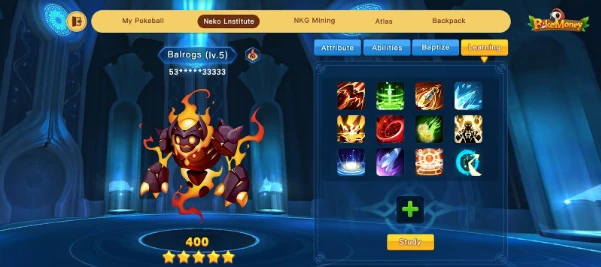
1.2 Model and data
From the aspect of economic model, this kind of chain game is not limited to single and double currency, pledge to obtain a large number of Token (if dual currency, get sub-token), transfer the financial pressure of NFT to the currency, and then superimpose various mechanisms to alleviate the selling pressure The price of the incoming currency fell.
image description
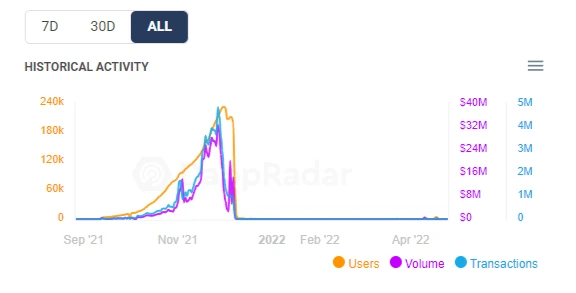
image description
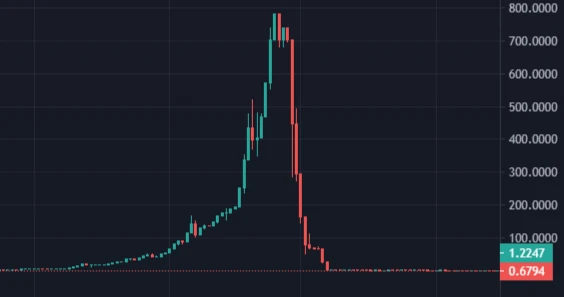
text
1.3 Opinions and Suggestions

① The development cost is low, and users do not have any requirements for image quality. You can use 4399 web games or idle mobile games for chain modification
② Interest-driven emotional chain games, without too much consideration of user stickiness
③ Generally, the life cycle is short, and it will soon enter a death spiral. If there are built-in dungeons, breeding, fighting, etc., it will help prolong the life of the project
text
text
2.1 Overview
Based on a certain image, the project party generates a certain number of NFTs by means of artist creation or AI creation, and builds a game system based on these NFTs. Its core model is: let NFT not only have its own meme attributes, but also provide pledges, battles, etc. to obtain game Token empowerment.

text
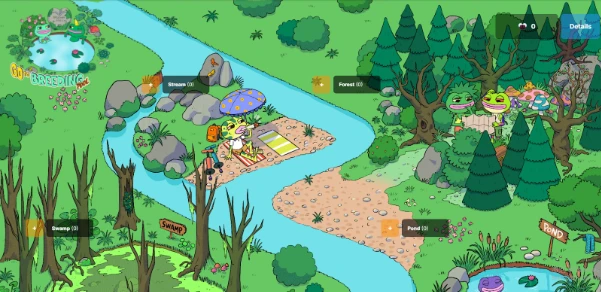
2.2 Model and data
image description
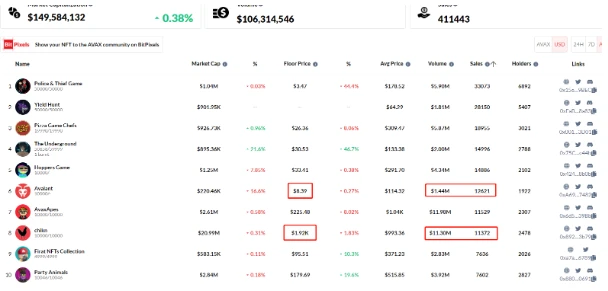
AVAX NFT Sales Quantity Ranking
text
2.3 Opinions and Suggestions

①The focus of development is more on NFT, which has a unique style of painting and narrative. If there is a traditional IP, the effect will be better
② In terms of game mechanics and economic models, try not to imitate disks. Unique innovations that adapt to NFT will bring more attention and good reputation
③The current environment is more suitable for Avalanche and Ethereum, and the attributes of user groups will be more suitable
text
text
1.1 Overview
This kind of chain game represented by Axie is one step closer to the traditional game - it has a world view and a simple plot. Compared with the original mining game, it has a more sense of substitution and a richer gameplay. Its core gameplay model is as follows: players form a team to perform PVE activities such as breakthroughs and dungeons through blind boxes or other methods of Mint character NFT, and players obtain corresponding benefits from PVP battles. Representative games include: Axie Infinity, StarSharks, etc.

Compared with mining chain games, there are two main differences, which not only increase the fun of the game, but also lengthen the life cycle of the game:
① The way to obtain NFT increases randomness. Buying blind boxes or other Mint methods may obtain NFTs with different attributes
text
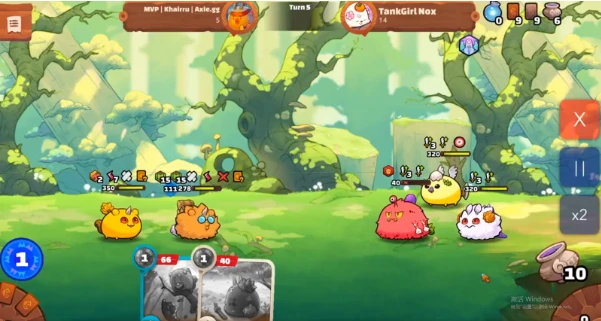
1.2 Model and data
image description
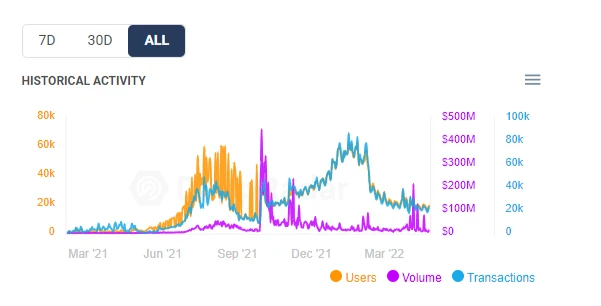
Axie Infinity
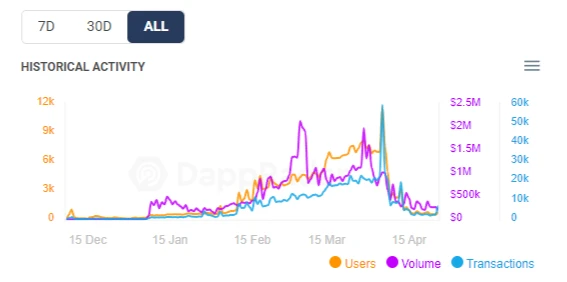
StarSharks
text
1.3 Opinions and Suggestions

①Action card type or other traditional mobile games that break through levels may be more suitable in terms of gameplay.
②The economic model should have unique highlights in conjunction with the gameplay. The benefits of multi-model factors and the enhancement of gaming will make the life cycle of the game longer.
③In the case of too high initial income and lack of loyalty weight, user stickiness cannot be maintained, and a death spiral will be inevitable.
secondary title
text
2.1 Overview
text
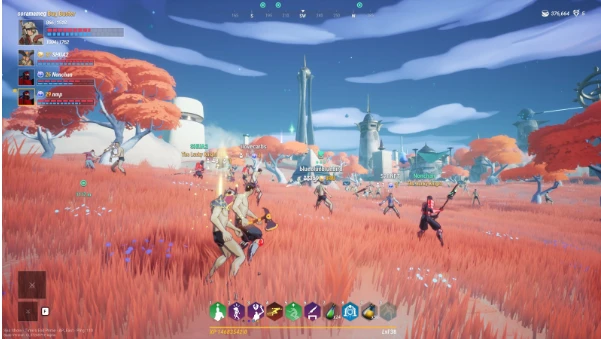
Bigtime
2.2 Model and data
The core gameplay model of this type of blockchain game is: (Since there are few reference blockchain games of the same type on the market, here is the gameplay model imagined by W Labs)
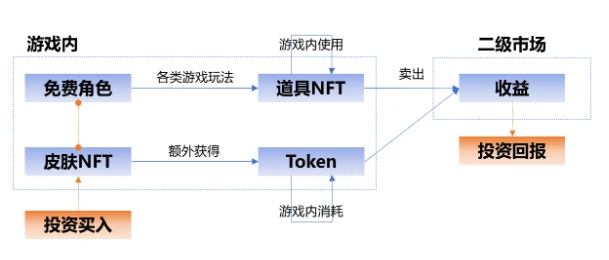
Taking bigtime as an example, the project party allows players to choose characters for free to play in the game without upfront investment. This design can greatly reduce the entry threshold for players, but the design of only NFT without token makes the overall liquidity low and players cannot calculate the rewards. this time. The following is a brief description of how bigtime plays:
There are currently four characters. Players choose one to enter the game. The large map randomly scatter the dungeon entrances. Enter the dungeon alone or in a team. After completing the dungeon, there is a chance to get NFT props (currently there are various weapons and SPACE). The props obtained in the game can be traded in the market to obtain income.
At present, the game can buy VIP tickets. According to the level of VIP tickets, it can enter the closed beta in batches. The earlier you enter, the higher the probability of getting NFT. It is reported that subsequent players can own SPACE, and fight in a copy in their own SPACE, with higher income. The liquidity of current props is average.
text
2.3 Opinions and Suggestions

①Traditional game chain reform requires the support of core gameplay, and the update iteration speed and the ability to fix bugs are all highly demanding.
② The income of players with different entry thresholds cannot be simply divided. The overall level still needs to be highly different, and it needs to be influenced by multiple factors.
③ The game needs more narrative, especially on the prop NFT, which can carry more funds and continuously expand the capacity of the reservoir.
④Whether the pain points of traditional MMOs such as too single gameplay and long time consumption can be improved by combining the narrative of the Metaverse.
3. Competitive
text
1. Current status of the track
Competitive games are the most mainstream game type at this stage. Some powerful game teams have tried various subdivisions such as cards, strategies, and MOBA. We will introduce the current games according to their popularity, number of users, and gameplay. Competitive blockchain games for Web3.
image description
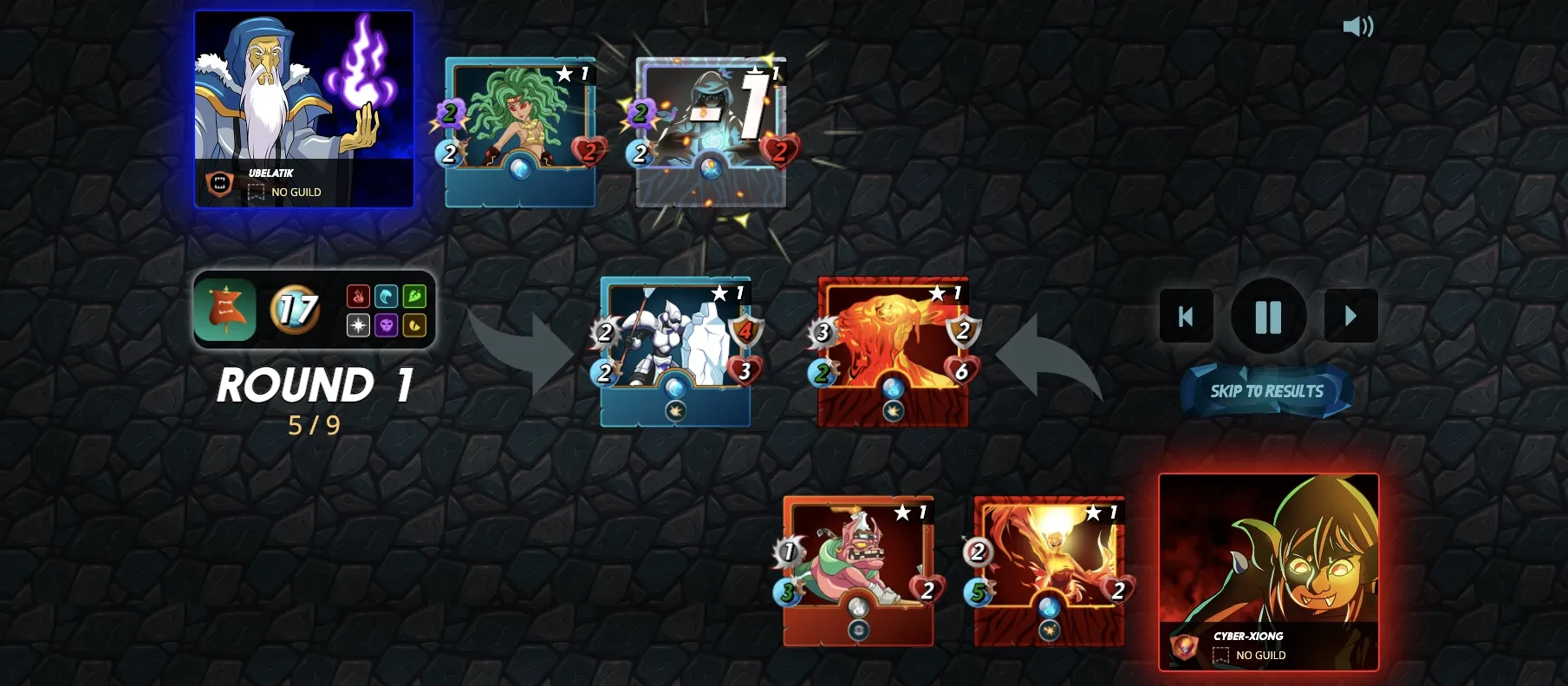
Splinterlands
image description
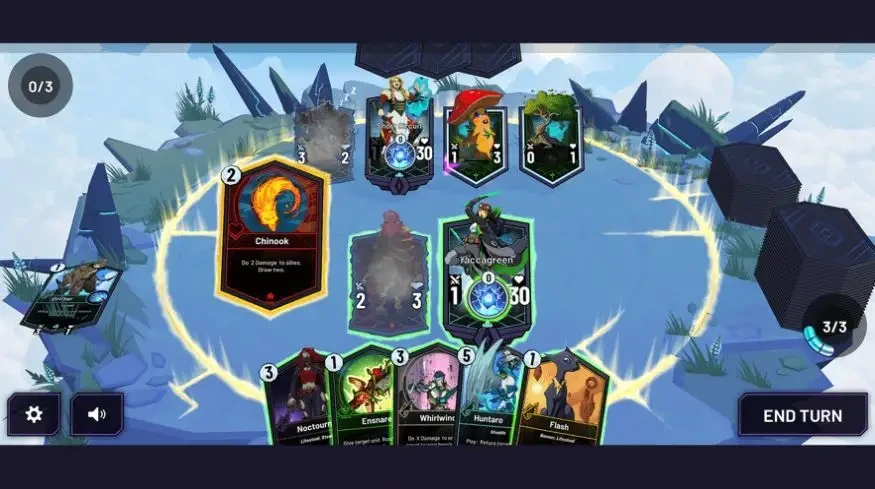
Skyweaver
image description
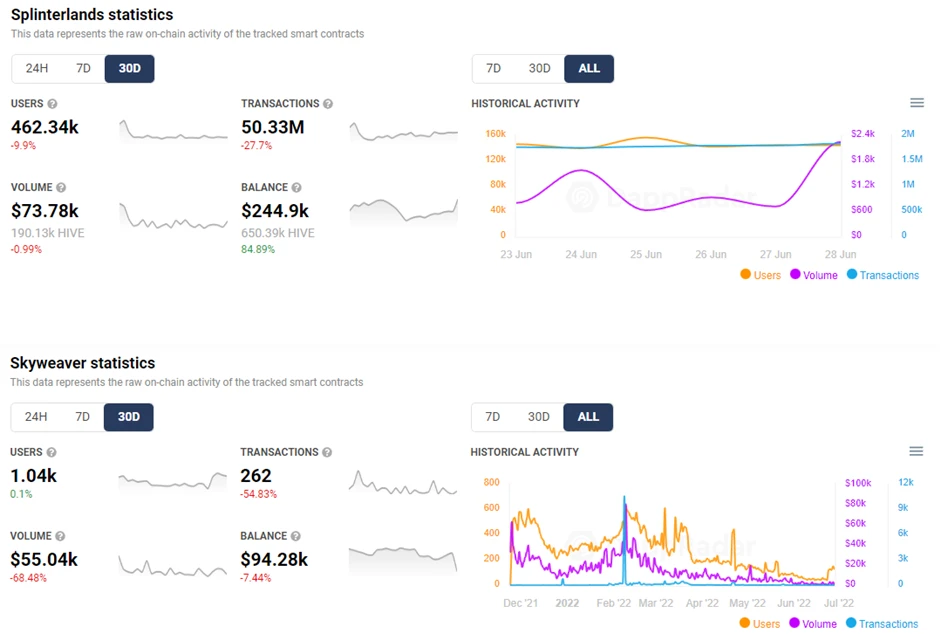
Number of users of the game
Perhaps due to the difficulty and cost of development, in the early development process of GameFi, card battle chain games occupied a large market in competitive chain games. Whether it is a high-quality game such as Splinterlands, Skyweaver, Gods Unchained, or some other imitation discs, they can attract users with certain playability and strategy in the early stage of the project; but as time goes by, the games playability When the performance cannot cover the low gold-making efficiency, users will start to lose. Even a project like Splinterlands, which ranks among the top three on the DappRadar user list all year round, is only supported by some old users and studios who have received early dividends, and the price and popularity of its tokens have been declining.
image description
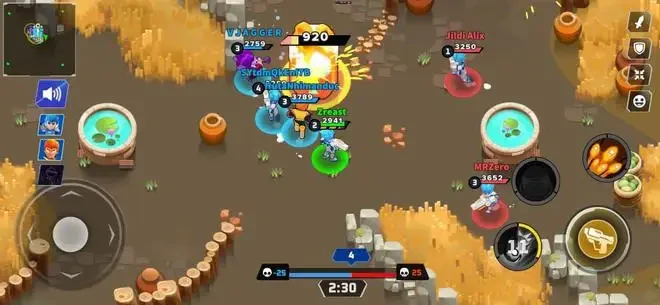
Thetan Arena
image description
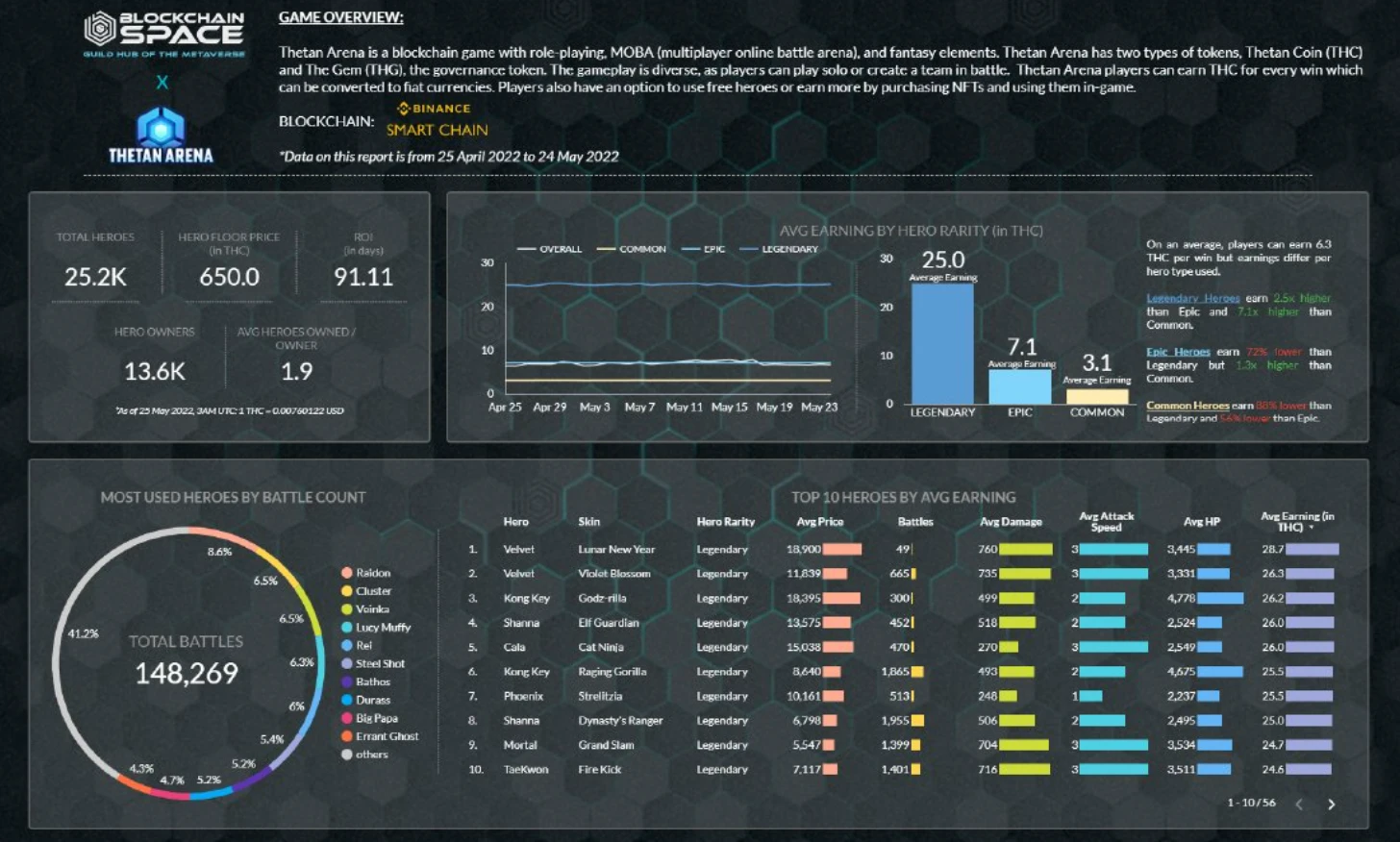
BlockchainSpace’s May Data Collection by Seatam
As the first high-quality MOBA game, with its exquisite graphics, Brawl Stars gameplay, and Free to Play+Play to Earn mode, it has attracted a large number of players since its launch in November 21. However, in the current GameFi track, the attribute of Fi is still biased. With the decline of the games gold earning rate and the downturn of the entire chain game track, the number of Thetan players has also declined rapidly. Judging from the current data, the number of users interacting with the contract every day is only about 500, and the transaction volume is only 1.1K. Although there are 25.2K hero NFTs in the market, both their tokens have depreciated severely, and the funds currently accommodated in the market are also large. not much.
image description
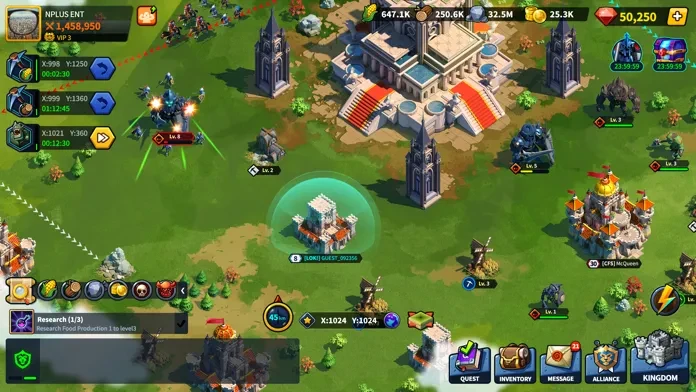
League of Kingdoms
League of Kingdoms is a strategic SLG chain game developed by Kudos, and has won many high-quality awards such as Andreessen Horowitz (A16z), Binance Labs, Sequoia Capital India, Yield Guild Games (YGG), Korea DeSpread, etc. Institutional joint investment, partners also include Dapp.com, OpenSea, Maker, KyberNetwork and other well-known projects.
This [Kingdom Era] blockchain game favored by capital has not been very popular since its launch. From the point of view of contract interaction, from the initial hundreds of people to the current dozens of people, players are very interested in this type of game. Chain games do not pay the bill. On the one hand, war strategy games, once there is no number of people as the underlying basis, the fun of the game, such as battles and camps, cannot be reflected at all; In addition, the project party cut off many zero-krypton users at the same time of killing the script, so the popularity is getting colder and colder. Compared with IGG’s monthly active users of 12 million and average monthly turnover of 440 million, this kind of heavy krypton, slow-paced war strategy game in the early stage will be very challenging to do chain reform.
image description
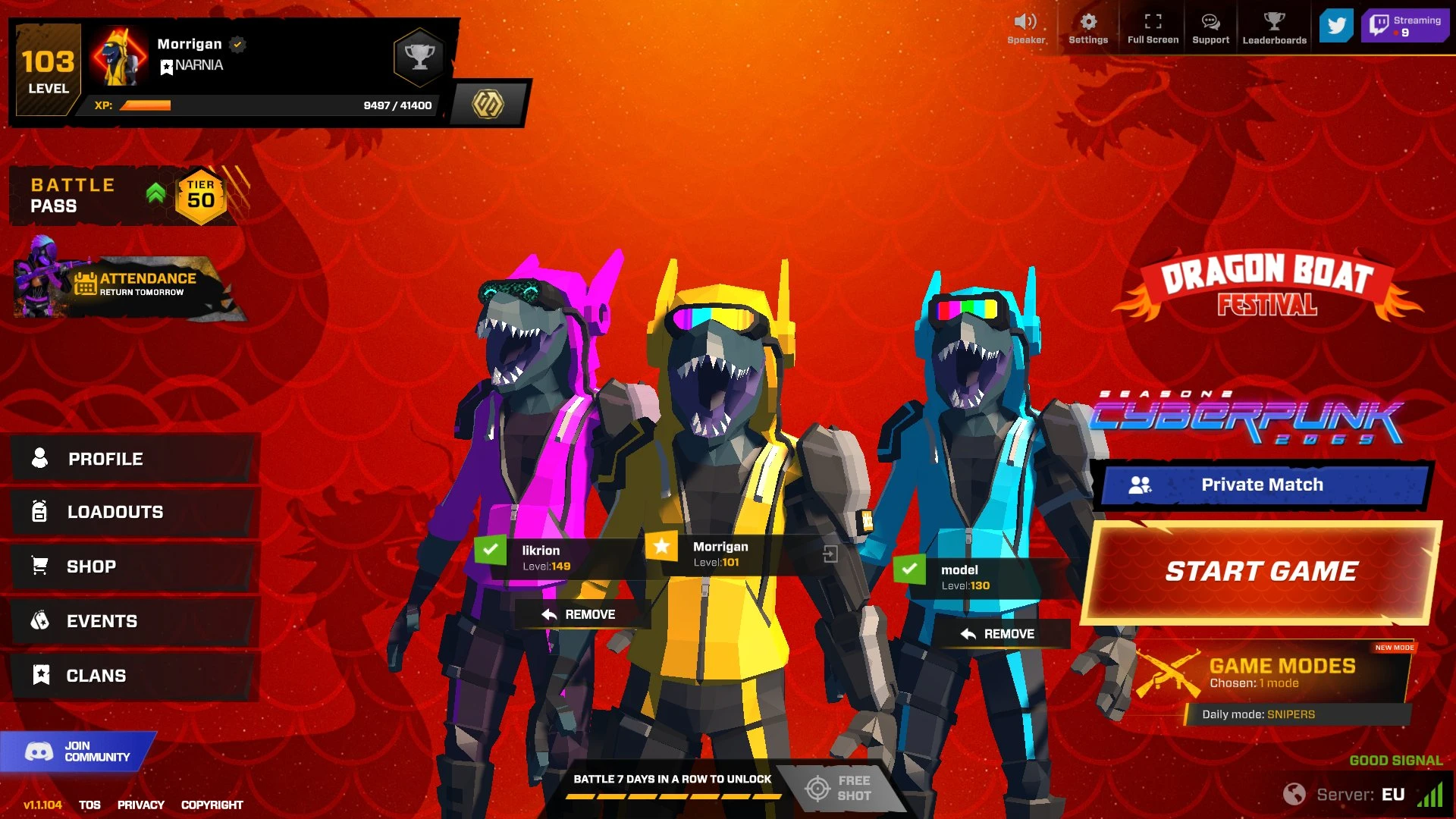
Mini Royale
Mini Royale is a P2E shooting game that runs on the Solana chain. It has received tens of millions of dollars in financing from top institutions such as a16z, Sequoia Capital, Solona, FTX, and Alameda Research. As a rare FPS chain game at present, the community has a lot of enthusiasm and active users. The initial 10,000 NFTs were sold out in 30 seconds on the Magic Eden NFT market, but the token economy has not yet been introduced (in-game tokens will be launched soon) Coin CHEDDAR), is still in the stage where players hold NFT heroes + participate in the game, and get NFT weapon airdrops and other rewards.
text
2. Competitive economic model
As mentioned before, while the blockchain brings more opportunities to the game industry, it is also subtly affecting gamers. In the world of Web3, players pursue the playability of the game on the one hand, but they not only need the pure playability of the game, Play to Earn, Play to Own, etc. are what users need, so it is a complete chain game Economic models are critical.
Competitive mainstream models:
① Krypton gold threshold tokenization
The project party does not change any game content at all, and simply presents equivalent currencies such as diamonds, ingots, and coupons in Web2 as Tokens on the chain. This is the method adopted by many chain reform projects at present. The advantages and disadvantages are simple: the project party can easily change the traditional game chain without changing any game data. Similarly, for players, the game experience is no different from Web2 , and most of the projects still retain the traditional game deposit channel.
Therefore, in this case, the playability of the game completely determines the vitality and cycle of the project. In addition to polishing the quality of the game, the token can only be properly empowered to play:
Earn income by staking a single currency (tokens, points, game props...)
DeFi advanced gameplay (OHM 3.3 game or VeToken governance narrative)
② WIN TO EARN
On the premise of not completely changing the fairness and reasonableness of competitive games, based on the overall gameplay, the Play to Earn gold-making mode is integrated into the entire game. In this case, the added layer of metal-playing nature of the game itself will naturally attract more users, but it will also fall into the death spiral problem of traditional P2E chain games. For this, we also based on Different styles of games have designed some special gameplay models.
image description
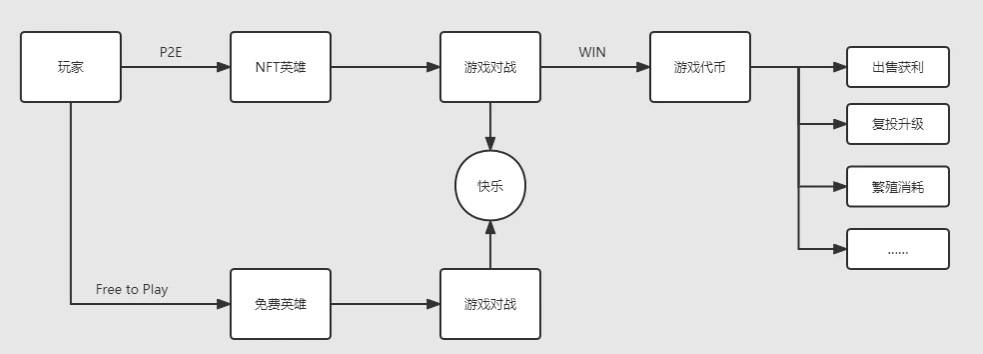
Simple W2E Model
Like other P2E chain games, the simple model cannot continue to provide long-term high gold-making returns. Regardless of whether the hero NFT is an unlimited interest-earning asset or not, the final outcome of the project is the same. It is nothing more than a lifeless mechanism like Thetan, or zero It is possible, [script + studio] luxury package can quickly bald the project.
③ Season Ranking Method
The project takes certain tokens as rewards, which are distributed to the winners of each season or specific competition according to the player ranking. This is no different from the competition rewards of Web2. Nowadays, many competitive chain games that have not issued tokens mostly adopt this method. The key points are:
Bonuses, distribution shares, etc. are fixed, and there will be no uncontrollable expenses
For a period of time, players need to remain active if they participate
text
3. Exploration direction of competitive blockchain games
text
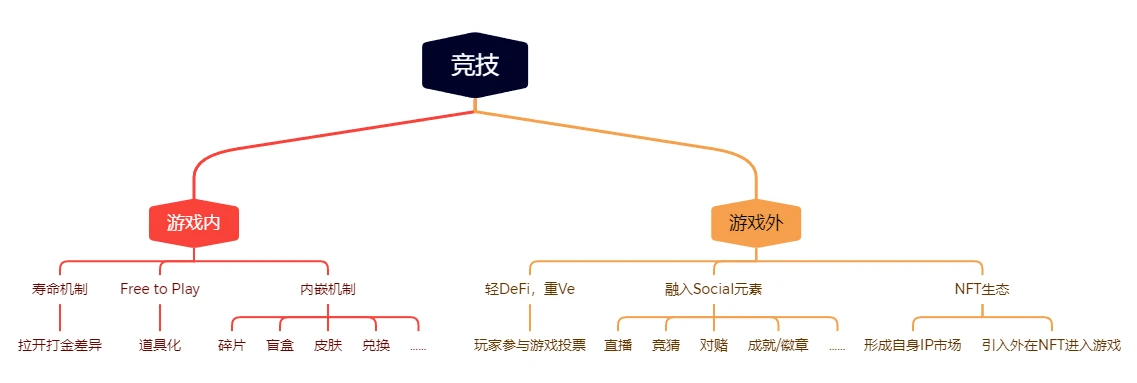
in game
The lifespan mechanism is a must. NFT-based hero skins cannot destroy the fairness of competitive games, but there must be a significant gap in the gold-making efficiency
For competitive games, the number of bottom-level players is the key, and Free to Play is also necessary, but Free Play players cannot be directly tokenized in terms of income
text
outside the game
Token gameplay should not focus too much on the benefits brought by DeFi, but guide users to consider Ve governance rights (the distribution of revenue from different sectors in the game, the voting rights of hero attributes, etc.)
More social elements are integrated into the competition. Various elements such as live broadcast, quiz, betting, achievements, badges, etc. can be added at different stages to strengthen Happy and weaken Earn
A lot can be done around NFT. Whether you want to form the IP attribute of your own project, or integrate NFT with strong IP such as BAYC and PUNK into the game, you can form a large NFT+GameFi+Social ecosystem.

In the Web2 world, competitive games have become the mainstream of todays game field, and the continuous rise of major events and live broadcast industries has further expanded the market for competitive games. But in the Web3 world, the competitive chain game track has just begun to take shape, and the road to competitive chain games is gradually rising, wait and see!
4. Special category
The most obvious difference between Web3 blockchain games and Web2 traditional games is the economic model.
text
1. Sandbox
Sandbox games (Sandbox Games) are evolved from sandbox games, which consist of one or more map areas and often contain a variety of game elements, including role-playing, action, shooting, driving, etc. Being able to change or influence or even create the world is a hallmark of sandbox games.
text
How to play:
image description
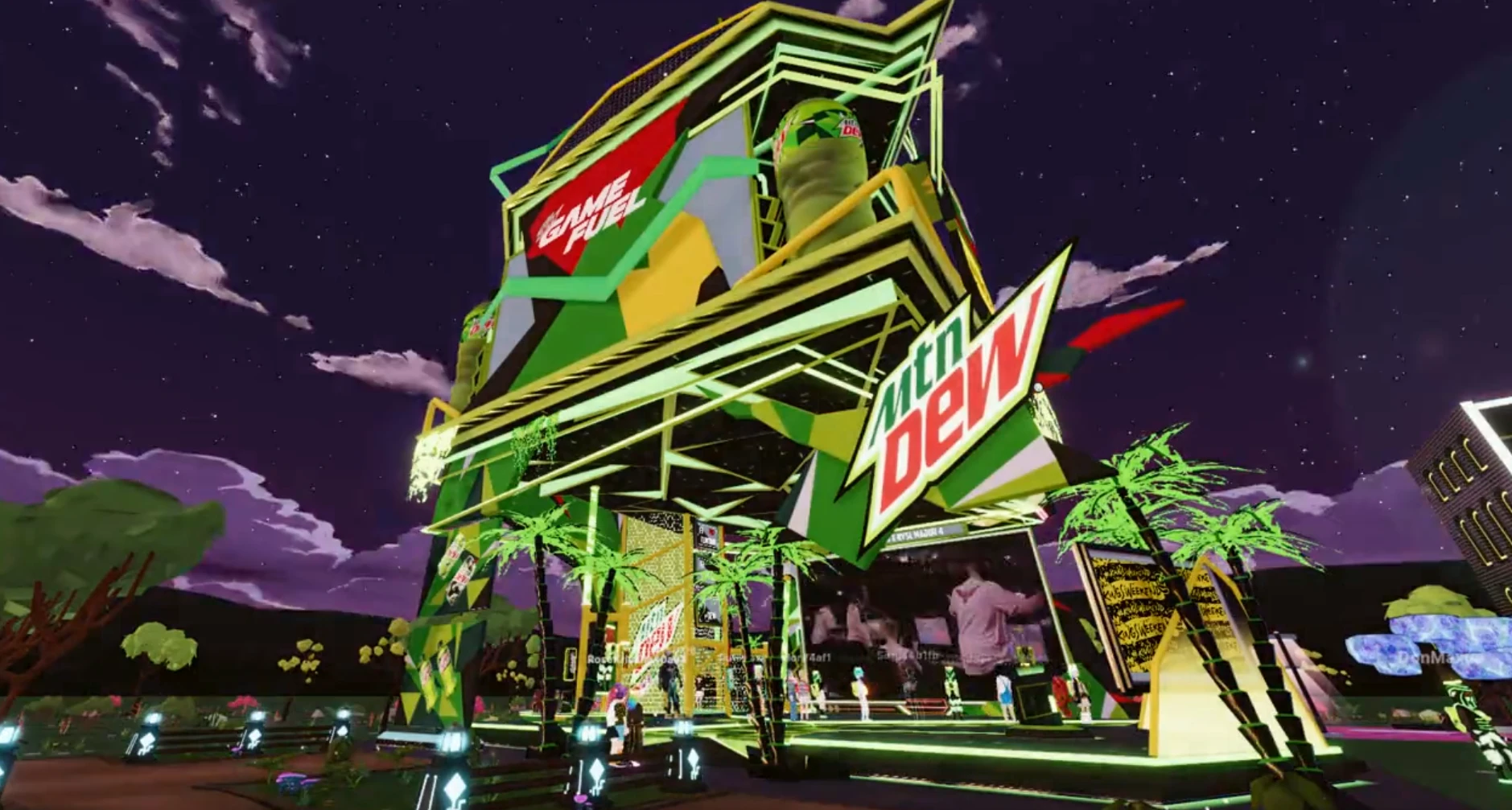
Mountain Dew event site
image description
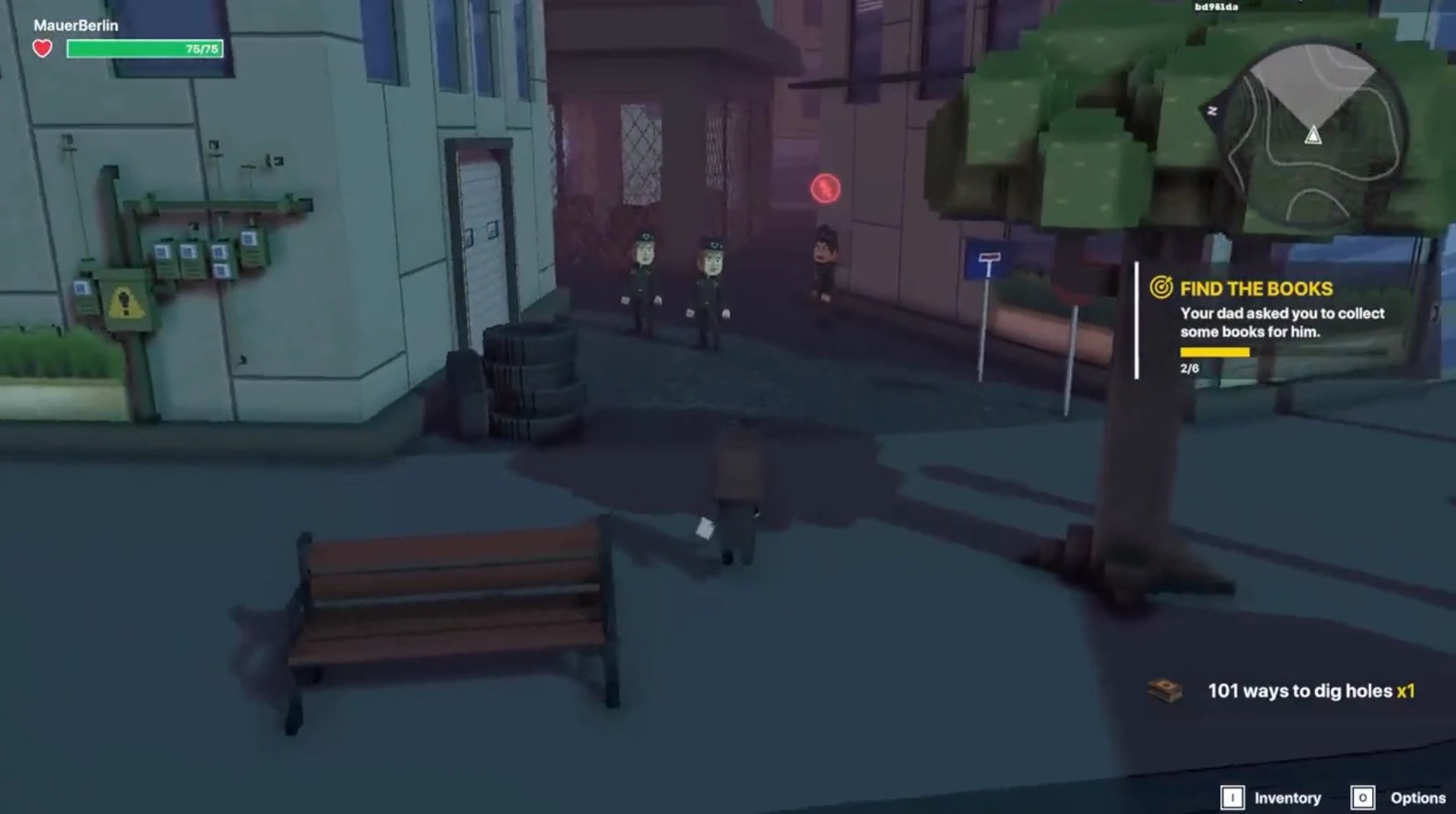
text
frame:
At present, land is the absolute core of Metaverse sandbox games. Owning Land means owning the ownership of the virtual land assets in the game. The owner can design and operate the land by himself, or resell it to others through the market to earn the difference.
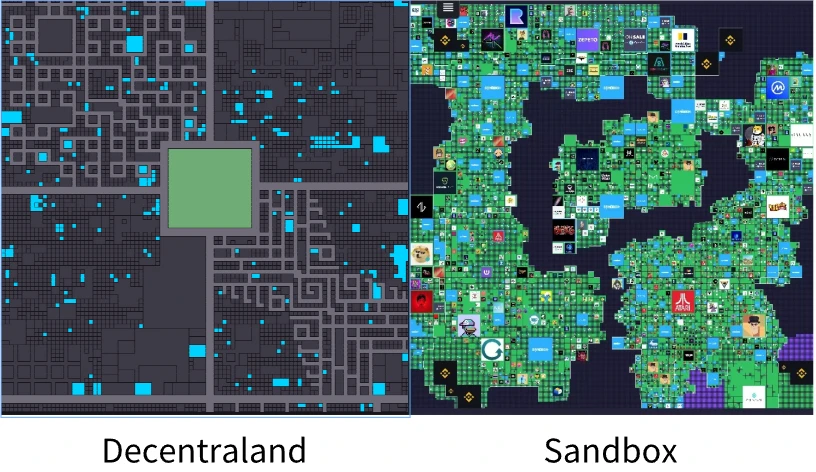
The concept of the metaverse is still in its infancy, so the current land is more about the scene layout of the two leading players by Web2/Web3 companies, such as Binance can be seen in the four corners of the Sandbox layout; followed by some large Capital enters the market, and a series of hype is made on the land through the stories of the metaverse; and there are not many users who actually buy the land and rely on it to build homes and create games.
When creating game scenes or game mechanisms, Decentraland does not have no-code tools and requires programming operations to create them; Sandbox provides players with several very good UGC tools. Click CREATE on the project official website to enter the tools In the box download interface, there are three options: GameMaker [game production], VoxEdit [NFT model production], and Avatar [character pinch face].
text
Vision:
Although different project parties have different roadmap development directions, for example, Decentraland hopes to create a metaverse world of VR virtual reality, and SandBox prefers a game content platform. But its ultimate goal is to build into:
Technically realize multi-platform interoperability, and multi-players are online together
The model gradually turns to DAO, and players participate in decision-making governance
In terms of content, cooperate with more games and manufacturers to create a large IP ecosystem
View:
View:
As a social project, the number of users and user stickiness are crucial
While strengthening its own IP, establish IP partnerships with various brands
Creation is the core gameplay of sandbox games, using the objects provided in the game to create something unique to the player. In combination with the blockchain, the direction of Play to own may be more suitable.
text
2. Gaming
text
Card category:
image description
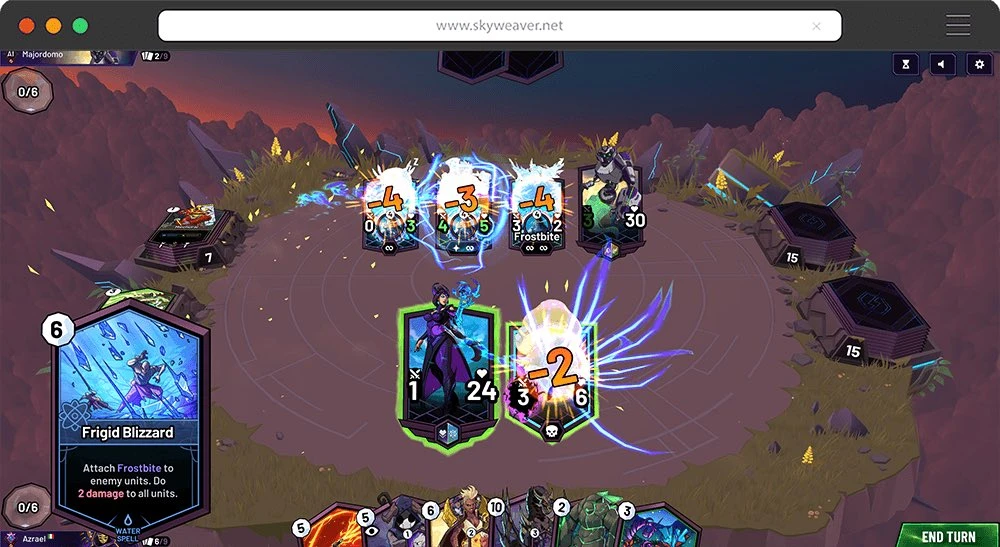
Skyweaver
text
SLG War Class:
The krypton level of traditional SLG games is well known, so high-quality SLG games such as Awakening of Nations and Era of Kingdoms have always been frequent visitors to the game revenue rankings. Because of such a gold-absorbing ability, LEAGUE OF KINGDOMS, as a Web3 SLG chain game, has also been favored by many high-quality players such as A16z, Binance Labs, Sequoia Capital India, Yield Guild Games (YGG), South Korea’s DeSpread, etc. Institutional joint investment.
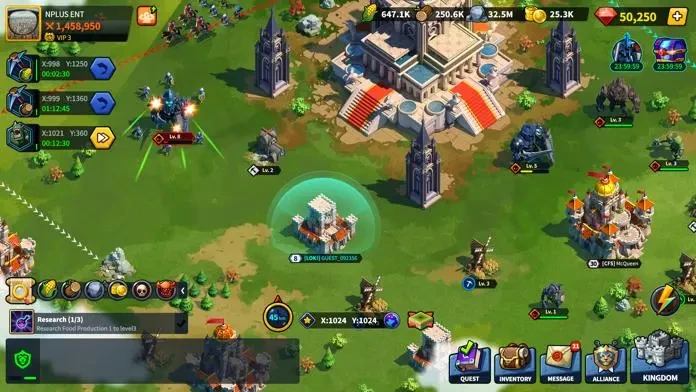
text
Game summary:
It is not difficult to see from the above-mentioned game-type chain games that traditional game-type chain reforms seem to be more difficult to develop better in the current Web3 ecology. Web3 users dont seem to like this kind of continuous gaming process with other players in the process of experiencing the game.
first level title
Part III: Summary of the full text
So far, the mainstream game types have been briefly explained, but due to space limitations, there are still many subdivided tracks that have not been introduced too much, such as Genopets of Pokémon, Sunflower of simulation business, Zedrun of horse racing, etc. Of course, there is also the originator of the most popular X2E track in Web3 this year - Stepn.
For projects such as X2E, we thought it was not a GameFi type of blockchain game at first, but later chatting with friends, we learned that it seems that it can also be used as a blockchain game of somatosensory games, and this type of game is also very popular among VCs. In addition to the early pure imitation disks, many projects with excellent backgrounds have emerged recently, such as singing Melody, skipping rope FitR, and reading ReadON. (PS: If you are interested in X2E, you can read our Wlabs X2E column)
Finally, let me talk about some personal views on the entire GameFi track chain reform:
Whether it is a direct chain modification of a traditional Web2 game package, or a new chain game based on IP, culture, scene, etc., it must be a Web3 chain game product, and the first element should be based on the current GameFi environment.
Those who are good at narrative are driven by innovation, those who are good at Fi are driven by models, those who are good at IP culture are driven by consensus, and those who are absolutely confident are driven by gameplay... any method is fine, but since it is a chain game, there are more Consider the habits and needs of current Web3 players. First of all, judging from the so-called 3A picture quality of the chain game, not to mention comparable to Sekiro, Black Myth Wukong, Spring Grass, etc., perhaps even the online games three or five years ago are not comparable, but if you look at it from the perspective of playability Generally speaking, the gameplay can make all Web3 players pay, so wouldn’t it be more delicious to play Web2?
What is the future chain game? I dont know, but it must not be the past Play to Earn
What do chain games want now? I dont know, but it must not be a simple Play to Fun!
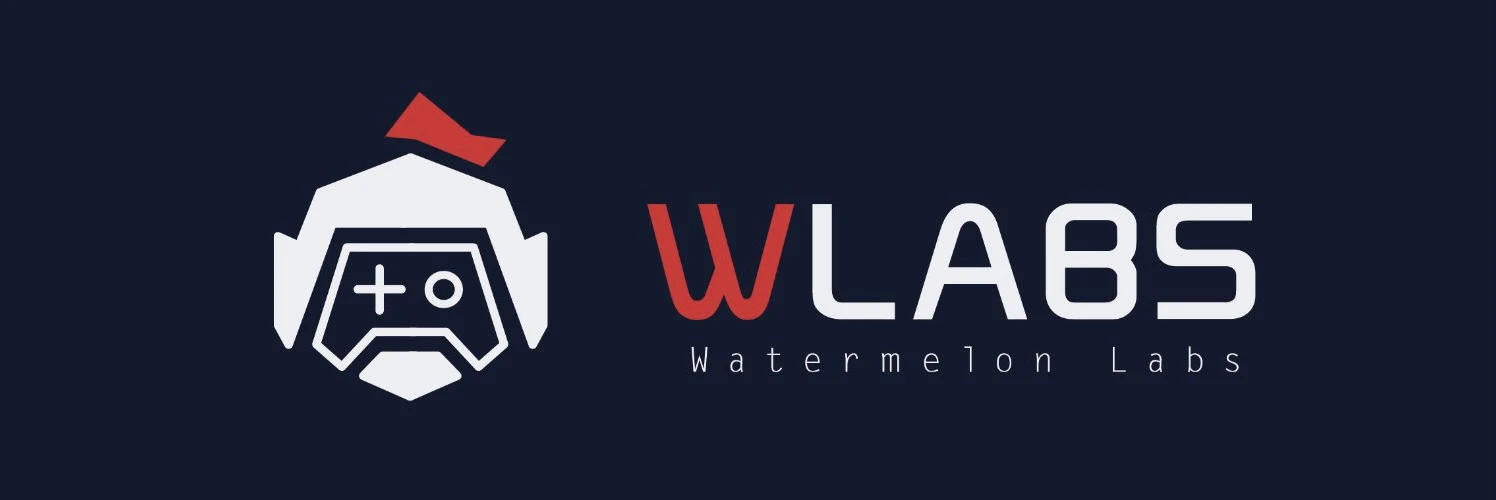
Welcome to reprint, originality is not easy, please indicate Guadain Laboratory W Labs produced
Melon Field Lab Twitter:https://discord.gg/wggdao
Melon Field Lab Twitter:https://twitter.com/GuaTianGuaTian
The in-depth research of Guadain Laboratory Mirror:https://mirror.xyz/iamwgg.eth
Melon Field Laboratory Medium:https://guatianwgg.medium.com/
The beta version of the Guadatian laboratory website:http://wggdao.com/

